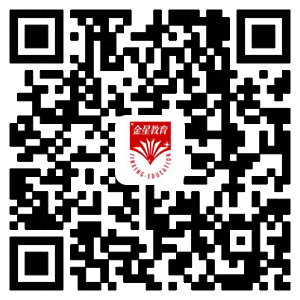1.二十六个字母的读音 (Letter Sounds).
五个元音字母(a, e, i, o, u), 每个发两种音:长音(其字母音)和短音
y不在单词开头时,一般被看做元音
2.单元音单词拼读 (Consonant-Vowel-Consonant Combinations)
如果一个英语单词或音节里只有一个元音, 且元音不在末尾,这个元音一般发短音.
如:Sam, cat, mat, 等等.
Beginning Consonants
Ending Consonants
One Vowel Word, Short Vowel Sounds
3.双元音单词拼读(Two Vowel Words):
一个单词或音节里有两个元音时,一般来说,前边一个元音发长音(其字母音),后边一个元音不发音.
如:make, mail, may, hay, say, see, sea, meet, meat, key, five, nine, tie, road, coat, toe, cute等等.
4.双/三辅音在一起时的联读 (Consonant Blends)
Beginning consonant blends (bl, br, cl, cr, dr, fl, fr, gl, fr, pl, pr, sc, sk, sl, sm, sn, sp, st, sw, tr, tw, scr, spl, str)
Ending consonant blends (ft, lf, lm, lp, lt, mp, nd, nk, nt, pt, sk, st)
Words ending in ll, ss, ff
l Consonant digraphs (ch, th, sh, wh)
5.特殊读法(1)– 带元音的特殊读法(Irregular Vowels)
igh, ing, ind, ild, ar, or, oi, oy, alt, alk, ost, old, er, ir, ur, ew, sion, tion, eigh, all, ow, ow, ou, ay, ous, ed, ed (t), ed (d), aw, au, oo, oo
以上字母组合作为整体音节发音。需记住它们所发的音。
Examples:
ar (car, far), air (hair), are (hare), au, augh (caught), aw (hawk)
al, all (all, tall, mall, hall), alk (talk, walk), alt (halt, salt), ay (may, play)
l ew (new, few), eigh (eight, weight),
ed:
usays /ed/: patted, landed, lifted
usays /t/: walked, hopped, stopped
usays /d/: cried, played, chewed
er (sister, brother), ir (girl, fir, firm), ur (burn, hurt)
ie (field), ing(king, sing, dancing), ind (find, kind, behind), ild (mild, wild, child), igh (high, night, light), ire
oi (oil, boil), oy (boy, toy), old (old, cold), ost (most, host), olt,
oo (book), oo (tool, school), or (or, for, horn),
ow (读音一:cow, now, how, bow; 读音二:bow, low, blow, snow),
ou (shout, out, loud)
ould (could, would), ough (五种不同的读音:cough, through, ought, slough, plough),
ought, , ous (famous, nervous),
ue (cruel), ui (fluid)
tion (attention, fiction), sion (passion, expression),
ending sounds : ang, ong, ung, edge, le
6. 特殊读法(2)
l 如果一个单词或音节里只有一个元音,而且元音在末尾,这个元音一般发长音(其字母音) (Vowel at the end).
如:me, hi, go, baby, table, humor,hibernate 等等。
Y在末尾 (作为元音处理)(y at the end):
u 单音节词, 没有其他元音,y发”I”(one syllable word, y at the end (pronounced as “I”)): my, why, fly, sky
u 多音节词, y发”E” 的音(two or more syllables, y at the end (pronounced as “E”)): daddy, mommy, baby,honey, crazy
7. 特殊读法(3) - 固定读音的单词 (Sight Word):
is, are, the, a, to, here, hey, have, son, love, come, give, field…… 等.
它们不遵守前边的发音规则,需要死记硬背。
8. 特殊读法(4) – 辅音的特殊读法
有一些辅音不发音 (silent consonants).
u Silent b: comb, lamb
u Silent h: ghost
u Silent k: knife, knock, knob, know…
u Silent w: write, wrist, wreck …
"c" 和 "k" 在一起时, 发一个音: quick, black等.
"q" 总是和"u"在一起:quite, quick, quit, quilt等.
之所以指出这一点, 是在这里u不能再被认为是元音, 而是和q一起组成一个辅音组合. 于是, 在quite这个单词里只有两个元音, 是双元音单词, 第一个元音i发字母音, 第二个元音e不发音.
"p"和 "h"在一起, 发/f/的音: phone, photo.
复数s及末尾s的读音(Plural s and the sounds of ending s)
c和g 的两种读音:
u 如果i(或y)或者 e 跟在c或者g的后边, c发/s/, g发/j/的音: center, cigar, nice, mice, gem, giant, gym, page.
u 其他情况下, c发/k/, g发/g/: can, clap, cup, great, glad, got, goat, log.
u 特殊情况: get, give
9. 多音节单词和复合词 (Words with multiple syllables and compound words)
多音节单词: believe, multiple, syllable, compound
复合词: homework, highway, sidewalk, inside,
